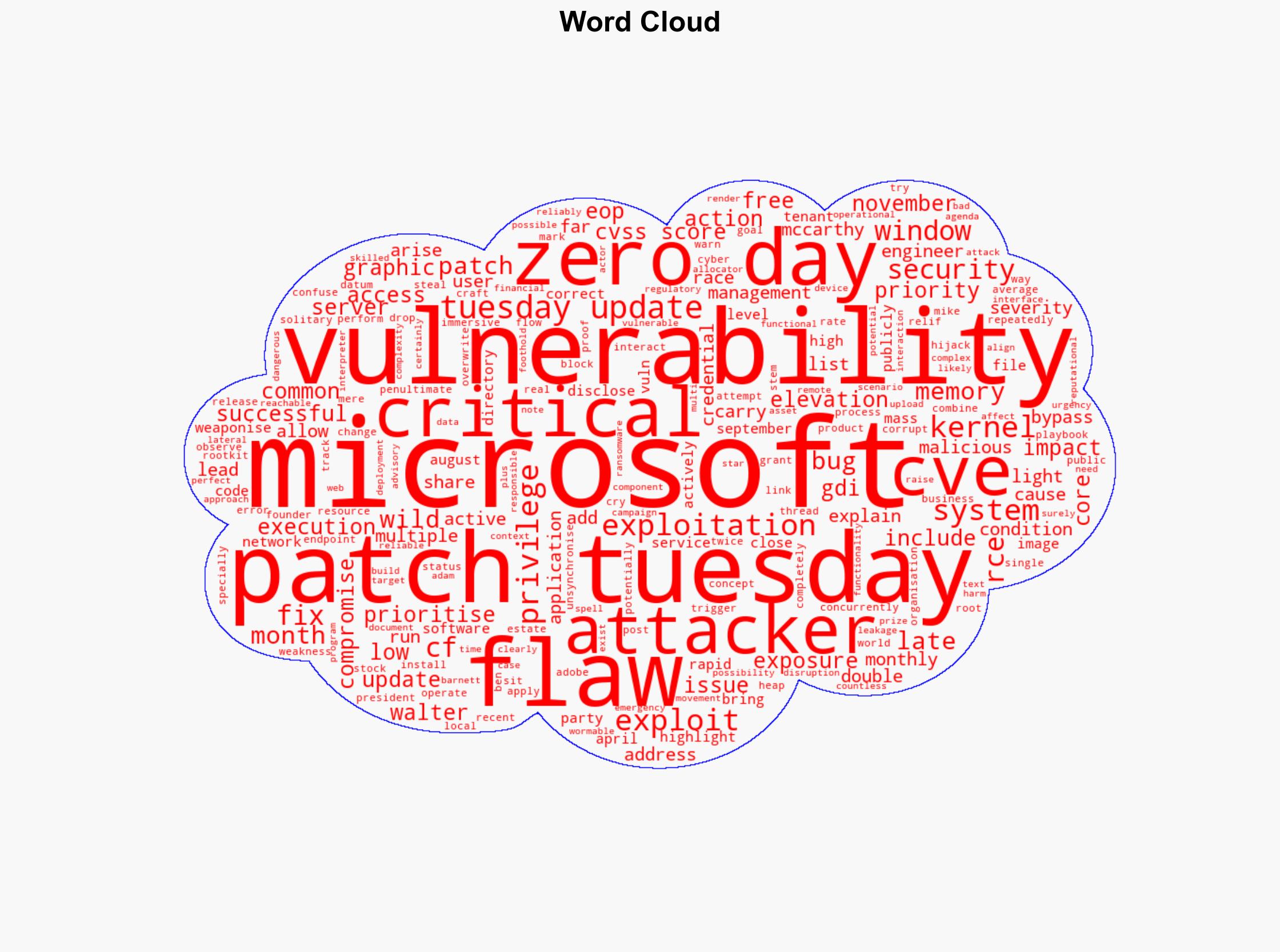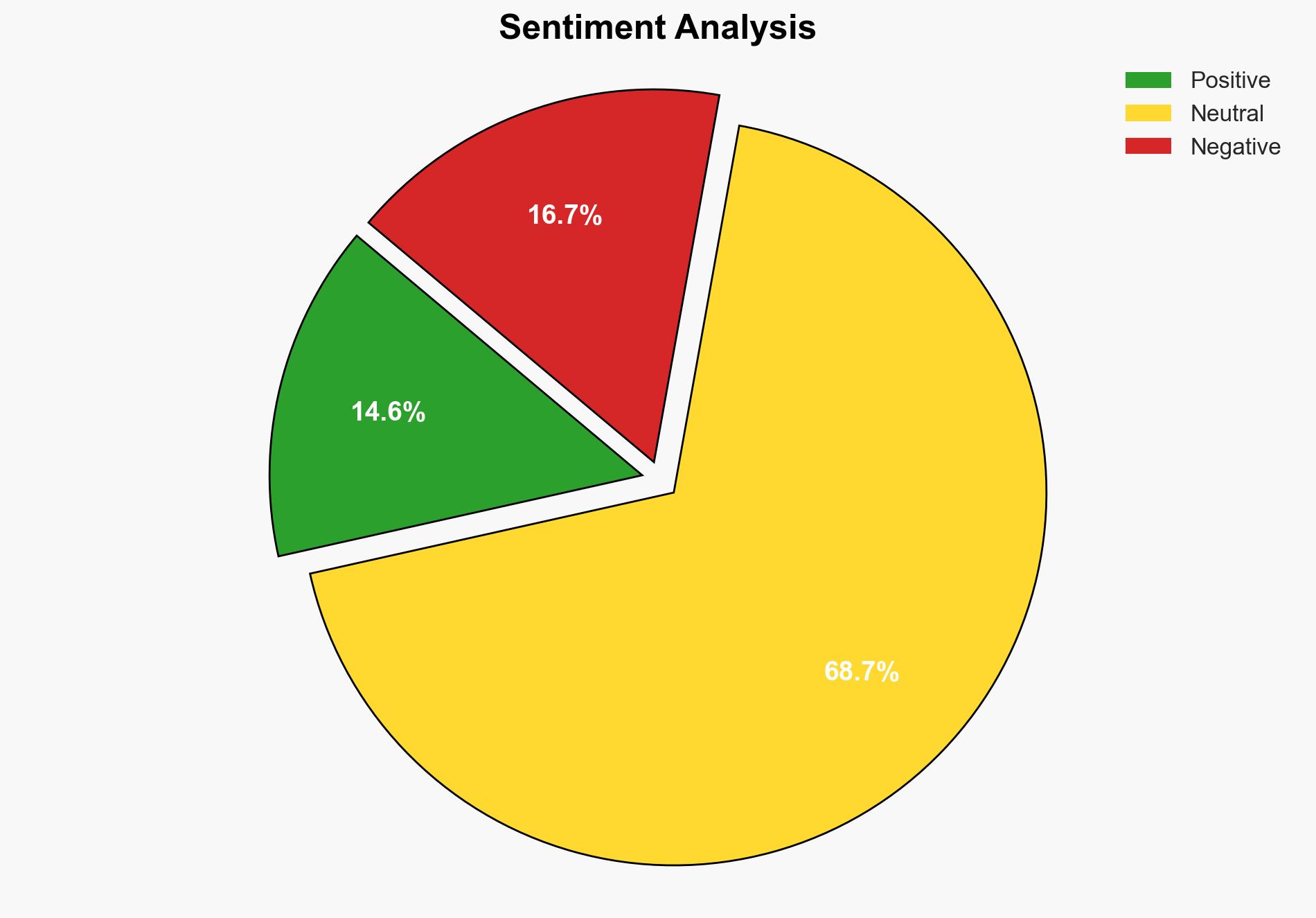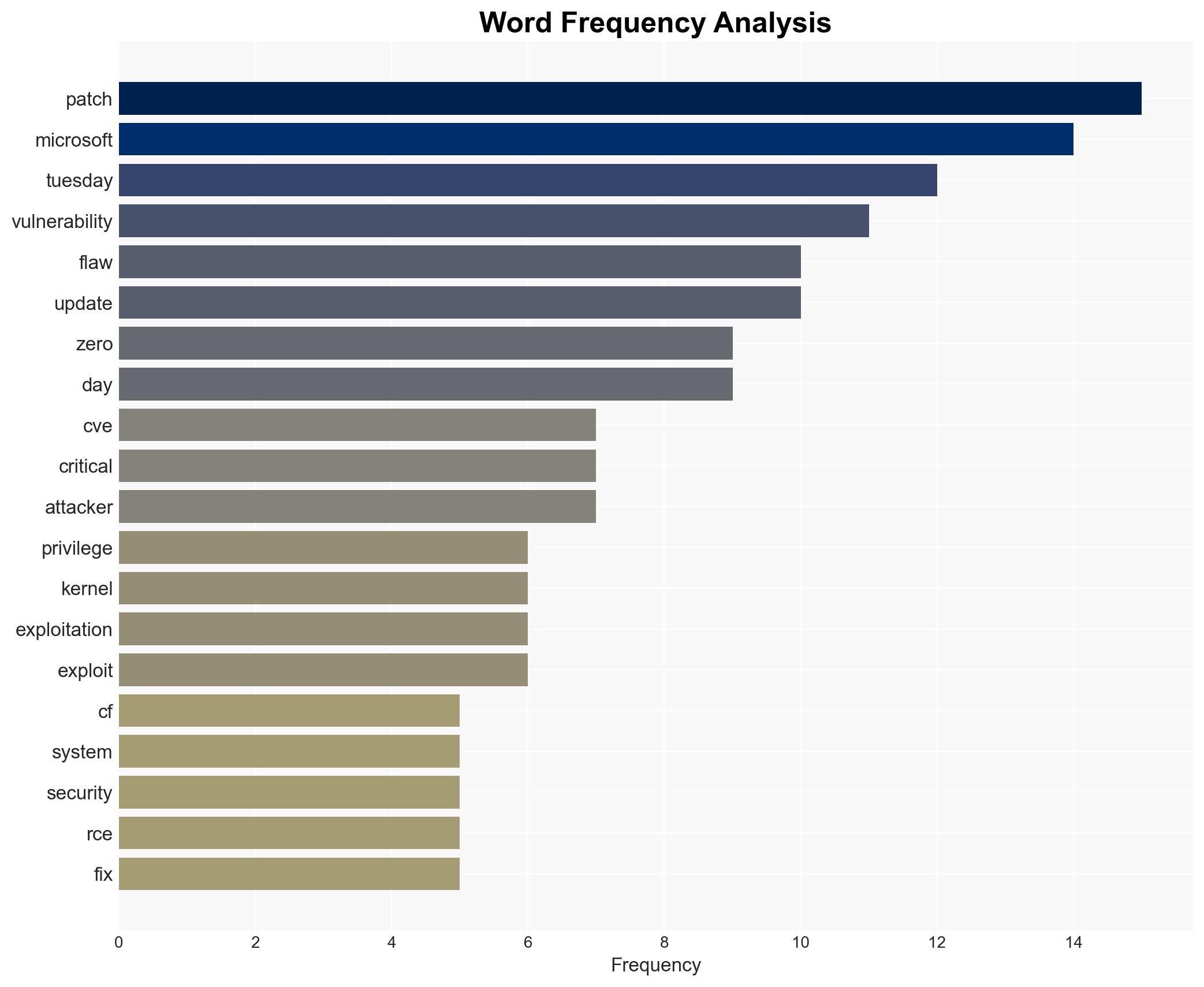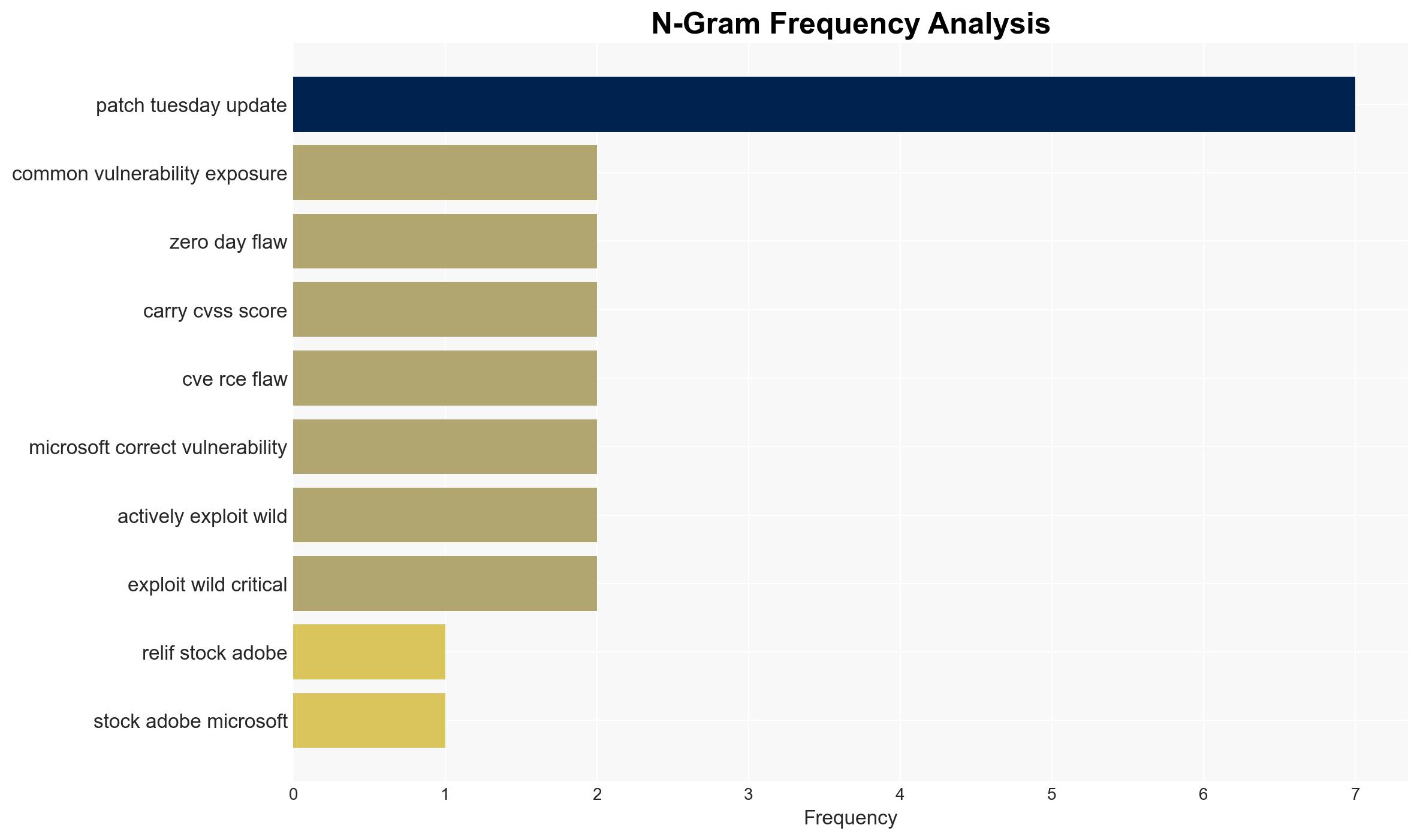Microsoft users warned over privilege elevation flaw – ComputerWeekly.com
Published on: 2025-11-12
AI-powered OSINT brief from verified open sources. Automated NLP signal extraction with human verification. See our Methodology and Why WorldWideWatchers.
Intelligence Report: Microsoft users warned over privilege elevation flaw – ComputerWeekly.com
1. BLUF (Bottom Line Up Front)
The most supported hypothesis is that the privilege elevation flaw in the Windows kernel represents a critical vulnerability that could be exploited by threat actors to gain elevated privileges and potentially execute further malicious activities. Given the CVSS score and the observed exploitation in the wild, it is imperative for organizations to prioritize patching this vulnerability. Confidence level: High. Recommended action: Immediate application of the latest security patches and enhanced monitoring for suspicious activities.
2. Competing Hypotheses
Hypothesis 1: The privilege elevation flaw in the Windows kernel is a critical vulnerability that is actively being exploited, posing a significant risk to systems running Microsoft software.
Hypothesis 2: The vulnerability, while severe, is not being widely exploited due to its complexity and the necessity for local access, thus posing a lower immediate risk.
Hypothesis 1 is more likely due to the critical CVSS rating, the existence of a public proof of concept, and reports of observed exploitation. Hypothesis 2 is less supported given the urgency and prioritization recommended by cybersecurity experts.
3. Key Assumptions and Red Flags
Assumptions include the reliability of the CVSS score as an indicator of risk and the accuracy of reports regarding active exploitation. A red flag is the potential underestimation of the vulnerability’s impact due to its complexity, which could lead to complacency in patching efforts. There are no clear indicators of deception, but the rapid dissemination of proof of concept could be a tactic to increase urgency.
4. Implications and Strategic Risks
The primary risk is the potential for threat actors to gain elevated privileges, leading to credential theft, installation of rootkits, and further system compromise. This could result in mass data breaches, ransomware attacks, and significant operational disruptions. The vulnerability could also be leveraged in targeted campaigns against high-value targets, increasing geopolitical tensions if state actors are involved.
5. Recommendations and Outlook
- Immediate application of the latest security patches to mitigate the vulnerability.
- Enhanced network monitoring and anomaly detection to identify potential exploitation attempts.
- Conduct security awareness training for employees to recognize and report suspicious activities.
- Best-case scenario: Rapid patch deployment prevents widespread exploitation.
- Worst-case scenario: Delayed patching leads to significant data breaches and operational disruptions.
- Most-likely scenario: Some exploitation occurs, but timely patching mitigates widespread impact.
6. Key Individuals and Entities
Ben McCarthy, Lead Cyber Security Engineer at Immersive; Mike Walters, President and Founder of Action.
7. Thematic Tags
Cybersecurity
Structured Analytic Techniques Applied
- Adversarial Threat Simulation: Model and simulate actions of cyber adversaries to anticipate vulnerabilities and improve resilience.
- Indicators Development: Detect and monitor behavioral or technical anomalies across systems for early threat detection.
- Bayesian Scenario Modeling: Forecast futures under uncertainty via probabilistic logic.
- Network Influence Mapping: Map influence relationships to assess actor impact.
Explore more:
Cybersecurity Briefs ·
Daily Summary ·
Methodology





